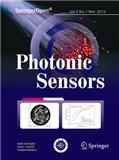
光子传感器(英文版)(Photonic Sensors) 知网目次万方目次维普目次
- CSCD
- 高T3
- EI(中国2024)
- 主管单位:
教育部
- 主办单位:
电子科技大学
- 国际刊号:
1674-9251;EISSN2190-7439
- 国内刊号:
51-1725/TP
- 学科分类:
- 字数:
22000-52000
- 有无基金:
/有基金 100.0%
- 周期:
CN外文-季刊
- 特殊属性:
第一批认定学术期刊
- 电话:
028-83200028,61830278(202302期)
- 邮箱:
photonicsensors@uestc.edu.cnphotonicsensors_edit@uestc.edu.cn(202302期)
- 复合因子:
0
- 综合因子:
0
- 收录:
知网目次,万方目次,维普目次
- 级别:
CSCD,高T3,EI(中国2024)
- 杂志社官网:
- 投稿网址: https://www.editorialmanager.com/phse
期刊简介
《光子传感器》期刊已被查看: 次
更新频次
单位占比
一作占比
/有基金-100.0%投稿指南
1、投稿方式:在线投稿。
2、刊内网址:(202302期)
http://link.springer.com/journal/13320
http://www.springer.com/journal/13320/
3、投稿系统:
https://www.editorialmanager.com/phse
4、电子科技大学学报编辑部官网:
https://www.xb.uestc.edu.cn/
5、出刊日期:季刊,逢季末月出版。
2023年8月22日星期二
《光子传感器(英文版)》Photonic Sensors
Photonic Sensors 是由教育部主管、电子科技大学和德国Springer公司联合出版的英文学术期刊,以网络版和印刷版两种形式出版,于2011年3月创刊,季刊,本刊的所有文章均可在http://link.springer.com/journal/13320 免费下载。本刊已被EI Compendex,Scopus等检索系统作为固定收录源刊。
本刊的宗旨是报道及发表光子传感领域原创性的科学和技术研究的新进展、新成果,涉及领域包括光纤传感器、平面波导传感器、生物光子传感器及相关仪器、传感器复用及组网技术、光子传感器相关材料与器件等。本刊设有研究论文栏目,接收基于新原理、新结构和新材料等光子传感实验研究成果,及实验、理论和仿真相结合的研究报道。还设有研究快报栏目,供广大作者尽快刊登报道上述研究领域重要的最新结果和进展。此外,本刊还开辟了综述专栏发表光子传感热门研究方向的综述及评论文章。所有投稿论文需用英文书写并经过严格的同行评阅。
《光子传感器(英文版)》投稿指南
【官网信息】
Submission Guidelines
To give your manuscript the best chance of publication on Photonic Sensors, follow these editorial policies and formatting guidelines.
Our 3-step submission process
1. Before you submit
Before you submit, we recommend familiarizing yourself with the following.
● Make sure you are submitting to the most suitable journal (see “Aims and scope”)
● Make sure your manuscript is accurate and readable
● Understand the copyright agreement (see “Copyright and License Agreement”)
2. Ready to submit
To give your manuscript the best chance of publication, follow these editorial policies and formatting guidelines.
● Cover letter and Declarations
Please make sure you have the following information available before you submit your manuscript.
Cover letter and declaration section should be put in one separate file including the following information.
Cover letter should include the (a) Letter to Editor and (b) Title page
(a) Letter to the Editor
An explanation of why your manuscript should be published in Photonic Sensors or an explanation of any issues relating to the manuscript, such as response to comment.
(b) Title page
Present a title that includes, if appropriate, the research design or for non-research studies: a description of what the article reports.
List the full names, institutional addresses and email addresses for all authors, and indicate the corresponding author.
If a collaboration group should be listed as an author, please list the group name as an author and include the names of the individual members of the group in the “Acknowledgements” section in accordance with the instructions below and indicate the corresponding author.
Declarations include the following sections:
Availability of data and material. Authors should make readily reproducible materials described in the manuscript, including new software, databases and all relevant raw data, freely available to any scientist wishing to use them, without breaching participant confidentiality. Authors should make their new software, databases, application/tool described in the manuscript available for testing by reviewers in a way that preserves the reviewers’ anonymity. If this sub-section does not apply to your manuscript, please state ‘Not applicable’ beneath the relevant sub-heading. If you do not wish to share your data, please state that data will not be shared, and state the reason.
Competing interests. Authors should declare all competing interests in relation to their work. All submitted manuscripts must include a ‘competing interests’ section at the end of the manuscript listing all competing interests ([financial] and [non-financial]). Where authors have no competing interests, the statement should read “The author(s) declare(s) that they have no competing interests”.
Funding. All sources of funding for the research reported should be declared. The role of the funding body in the design of the study and collection, analysis, and interpretation of data and in writing the manuscript should be declared. If this sub-section does not apply to your manuscript, please state ‘Not applicable’ beneath the relevant sub-heading.
Authors' contributions. The individual contributions of authors to the manuscript should be specified in this section. The following kind of format (please use initials to refer to each author's contribution) is suggested: “AB carried out the molecular genetic studies, participated in the sequence alignment and drafted the manuscript. JY carried out the immunoassays. MT participated in the sequence alignment. ES participated in the design of the study and performed the statistical analysis. FG conceived of the study, and participated in its design and coordination and helped to draft the manuscript. All authors read and approved the final manuscript. If this sub-section does not apply to your manuscript, please state ‘Not applicable’ beneath the relevant sub-heading.
Acknowledgements. Please acknowledge anyone who contributed towards the article who does not meet the criteria for authorship including anyone who provided professional writing services or materials. Authors should obtain permission to acknowledge from all those mentioned in the Acknowledgements section. If this sub-section does not apply to your manuscript, please state ‘Not applicable’ beneath the relevant sub-heading.
Authors' information (optional). You may choose to use this section to include any relevant information about the author(s) that may aid the reader's interpretation of the article, and understand the standpoint of the author(s). This may include details about the authors' qualifications, current positions they hold at institutions or societies, or any other relevant background information. Please refer to authors using their initials. Note this section should not be used to describe any competing interests.
● Suggested reviewers
You are encouraged to provide information (name, e-mail and institute) of 5 experts in your research area, as candidate reviewers of your manuscript. The editor would select reviewers of your manuscript from or outside the list. This is not required, however, it will help the editors to accelerate reviewing procedure.
● Blinded manuscript preparation
The acceptable manuscripts should be prepared in MS WORD and the manuscript should be one column. As the journal operates a double-blind peer review process, please kindly remove author's information, funding, acknowledgements, etc. on the main manuscript. The requirements of the main manuscripts are listed below.
Title. A title that includes, if appropriate, the research design or for non-research studies: a description of what the article reports.
Abstract. The abstract should briefly summarize the aim, findings or purpose of the article. Please minimize the use of abbreviations and do not cite references in the abstract.
Keywords. Three to ten keywords representing the main content of the article.
Main text. This should contain the body of the article, and may also be broken into subsections with short, informative headings.
Conclusions. This should state clearly the main conclusions and include an explanation of their relevance or importance to the field.
Figures. Figures should be provided as separate files, not embedded in the main manuscript file. Upload the figures as separate figure files via the online submission system only (submit by choosing “figures” not “supplementary”). Also, please include a separate figure title and legend section after the reference list (i.e. Figure 1, Figure 2 etc.). Multi-panel figures (those with parts a, b, c, d etc.) should be submitted as a single composite file that contains all parts of the figure.
Tables. Table can be placed in the appropriate location within the manuscript and should be numbered and cited in the text in sequence using Arabic numerals (i.e. Table 1, Table 2 etc.).
References. Only articles, clinical trial registration records and abstracts that have been published or are in press, or are available through public e-print/preprint servers, may be cited. References should be numbered and cited in the text in sequence using Arabic numerals.
Abbreviations. If abbreviations are used in the text they should be defined in the text at first use.
3. Submit after acceptance
After acceptance, we provide support so your article gains maximum impact in the scientific community and beyond.
● Who decides whether my work will be accepted?
Peer-review is the system used to assess the quality of a manuscript before it is published.Independent researchers in the relevant research area assess submitted manuscripts for originality, validity and significance to help editors determine whether the manuscript should be published in their journal.
● Spreading the word.
Articles are widely promoted through email updates, table of contents, email alerts, postings on the SpringerOpen homepage, and press releases to the general and scientific press - all resulting in increasing levels of accesses for each article. SpringerOpen journals are also promoted at many major scientific conferences to bring your work to the attention of professionals in your field. You can also promote your article via your own email lists, online links, listservs, distribution at conferences and any other innovative techniques you wish to adopt.
http://www.springer.com/journal/13320
上一篇:极端条件下的物质与辐射(英文)(Matter and Radiation at Extremes)下一篇:北京林业大学学报(社会科学版)(不收版面费审稿费)
《光子传感器》同类物理期刊
-
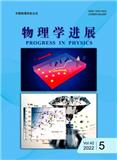
物理学进展(不收版面费审稿费)
北核,武A
CN中文-双月刊影响因子0.368
-
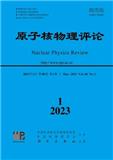
原子核物理评论
北核,科核,CSCD扩,高T3
CN中文-季刊影响因子0.365
-

波谱学杂志
科核,武A-
CN中文-季刊影响因子0.935
-
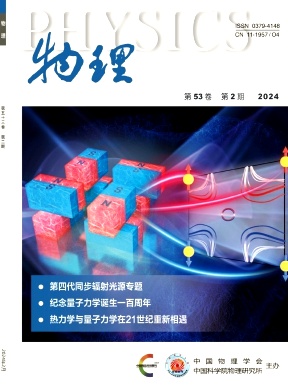
物理
北核,武B+
CN中文-月刊影响因子1.153
-
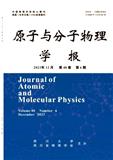
原子与分子物理学报
北核,武B+
CN中文-双月刊影响因子0.667
-
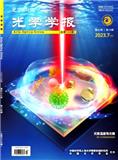
光学学报
北核,CSCD,科核,武A+,高T1,EI(中国2024)
CN中文-半月刊影响因子2.91
-
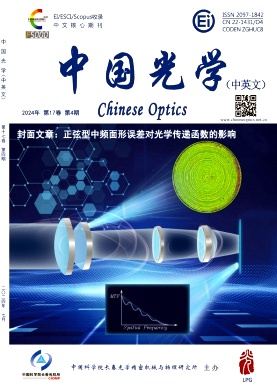
中国光学(中英文)(原:中国光学与应用光学)
北核,CSCD,科核,武A,高T2,EI(中国2024)
CN中文-双月刊影响因子2.336
-
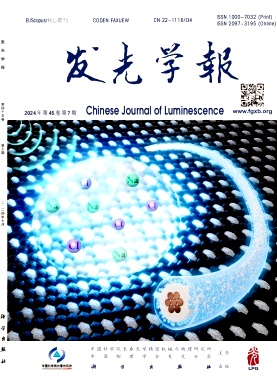
发光学报
北核,CSCD,科核,武A,高T2,高T3,EI(中国2024)
CN中文-月刊影响因子1.356
常见问题
-
光子传感器杂志社官网、联系方式是什么?
光子传感器 投稿网址:https://www.editorialmanager.com/phse联系电话:028-83200028,61830278(202302期)
投稿邮箱:photonicsensors@uestc.edu.cnphotonicsensors_edit@uestc.edu.cn(202302期) -
光子传感器杂志是核心期刊么?
光子传感器是核心期刊,级别是:CSCD,高T3,EI(中国2024), 是:物理分类下的知网目次,万方目次,维普目次收录的期刊。
-
请问你们是光子传感器杂志社吗?
我们不是《光子传感器》杂志社。本站主要从事期刊信息展示与期刊推荐,不是任何杂志官网,直投稿件请联系杂志社。本站仅提供免费的学术指导、论文辅导、期刊投稿信息整理收集服务。
-
你们指导服务后可以保证文章被发表吗?
期刊发表的成功与否,主要取决于文章内容的质量。编辑老师会根据研究领域、创新性等多因素进行考量。我们会帮助您理解期刊的发表要求,助力提升发表几率,从而增加发表的机会。
-
晋级论文能否在报纸上发表?
在学术界,论文的发表往往被视为研究者职业发展的重要一环。晋级论文,即为了获得更高职称或学术地位而撰写的学术论文,通常需在专业期刊上发表。然而,许多人可能会问
